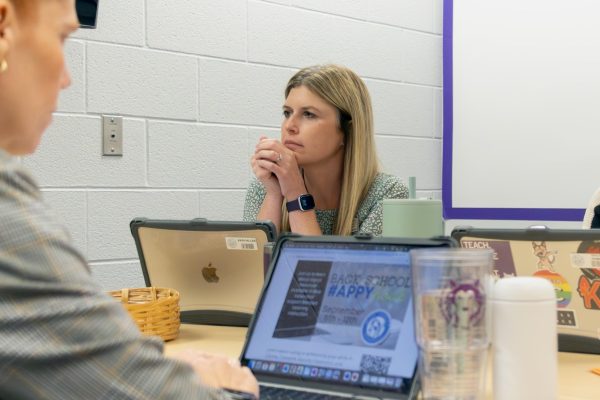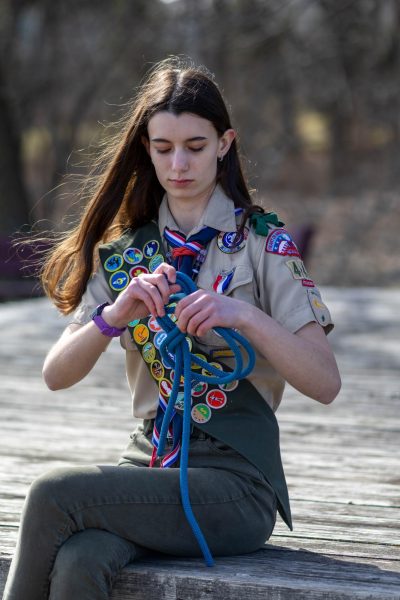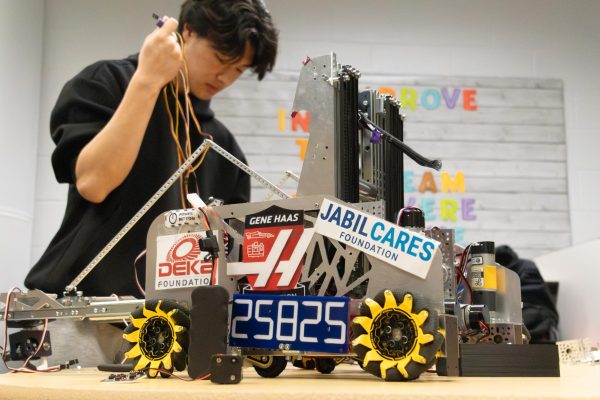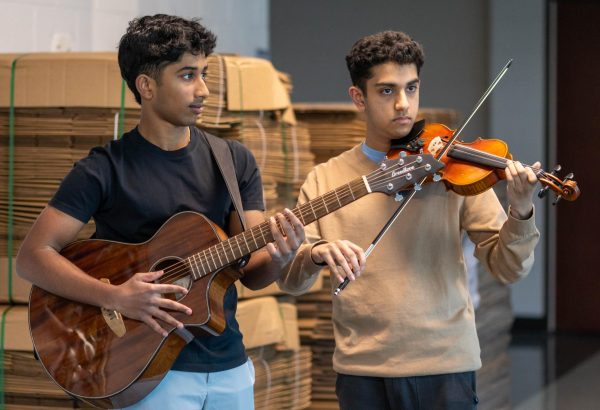The next generation
First and second generation immigrants face pressures to adapt to the culture of the United States.
Senior Alicia Pham was born in America to newly immigrated parents from Vietnam. As a second-generation immigrant, Pham said her family faced struggles with the language difference between the two countries.
“My parents don’t really speak English. That has been difficult for my family, mostly because we have to do a lot of translation,” Pham said.
Senior Angie Reyes said she also faced barriers as a child of non-native English speakers. Reyes’ parents left Honduras as teenagers to come to the United States. She said they had known of each other in Honduras, but they began their relationship in America.
Reyes said once her parents began their relationship, she was born as a second-generation immigrant. According to Reyes, her parents speak fluent Spanish and very little English. This left Reyes and her older sister to learn English on their own.
“My parents spoke pretty broken English when I was little,” Reyes said. “It was mostly my sister who taught me.”
By the time Reyes had enrolled in school at Timber Creek Elementary in Raymore, Mo, she said she had already become accustomed to speaking English. However, Reyes said her school still insisted she be in a special program.
“I was fluent in English, but just because I spoke Spanish they put me in an ESL (English as a Second Language) program for years,” Reyes said.
For Pham, the difference in language meant she missed out on certain experiences, such as not being able to go to parent-teacher conferences. Even outside of the language barrier that divided her family from others, Pham said there were other aspects that made her life different.
“I feel like there’s a lot of disconnect because my parents don’t really understand the culture here,” Pham said. “Whenever we do things in public, maybe other people see it as weird or unnatural because [people in public] don’t really associate it with our [Vietnamese] culture.”

Pham said her perception of judgment from the public eye has caused her to feel pressured to change herself.
“I think most of us who are [people of color] have felt a pressure to adapt to American culture. Growing up, I really rejected Vietnamese culture… you didn’t see a lot of people who look like you on the screen, and you didn’t really have people who are like you in your community, either,” Pham said.
Reyes also said she felt she was going through experiences her peers were not.
“Living in America feels lonely sometimes; there were just things my parents couldn’t really teach me,” Reyes said. “I had to do anything related to school by myself; I didn’t have anyone to help me with homework.”
Reyes presents different versions of herself in different settings. She said sometimes she feels like she cannot act the same way at home that she does at school.
“At home, I can be myself much more freely. But, whenever I’m at school, I feel like I have to turn into my ‘American self,’” Reyes said. “I feel as though I have to be more palatable to my classmates.”
Reyes said her family’s culture is not the standard at American schools. She does not see a lot of familiar culture outside of her own home. Reyes said one way the United States could be more representative of Honduras would be to have more Latin music and food.
“My favorite music is Latin music; I grew up with it. There are so many classics that I think are amazing,” Reyes said. “It’s definitely something America should become more used to.”
Reyes said that though it was difficult for her to find ways to connect to her Latin heritage, she was able to relate with friends who also understood her experience.
“A lot of my friends are also second-generation immigrants,” Reyes said. “Even if their parents are from different countries, there’s a lot of things that are a part of the core immigrant experience that we can relate to each other on.”
Although Pham also initially struggled to accept both her American and Vietnamese cultures, she said that as she has become older, her view has changed. Pham said her difficulties communicating with her grandparents helped her realize how important it was to embrace her Vietnamese customs.
“You see your grandparents getting older and you realize you can’t talk to them. You just spent most of your life rejecting their entire life view,” Pham said. “And then you can’t even speak their language so when you are with them, you don’t even know what they’re saying.”
Though she said she regrets not being able to connect with her Vietnamese heritage earlier, she now has a much greater appreciation for it.
“Before, I didn’t really know enough about it to appreciate it. Now that I’ve actively tried to learn more about the culture, I realized there’s a lot of cool things that I didn’t really participate in before, such as Lunar New Year,” Pham said. “[There were] huge celebrations that I was never a part of as a kid, just because I didn’t want to be seen as that other weirdo.”
Similarly, junior HarAnsh Singh Gugnani said he faced many of the same experiences growing up as a first-generation immigrant from India. Singh said he moved to America when he was almost 2 years old. Though he came to Kansas at an early age, he said he still felt different from other kids at school.
“I have always stood out from the crowd. I always had a turban on, even in elementary school,” Singh said. “Now, I have a beard and so you know, everything just stands out.”
Singh follows Sikhism, a religion founded in Punjab, a region of India from where he and his parents emigrated. He said finding and connecting with other Sikhs throughout his time in school was next to impossible, especially in elementary and middle school.
“In the whole feeder system, I was the only [Sikh] until about my eighth grade year,” Singh said.
School was also an obstacle for Reyes. But, instead of feeling isolated in her community like Singh, she felt isolated in the classroom.
“Even though I was top of my class, and tested better than most of my other classmates, [my teachers] thought that me speaking Spanish somehow took away from my English speaking ability,” Reyes said.
The test scores of Reyes proved that she was proficient, if not advanced, in English but her teachers would not let her leave the ESOL program until she left elementary school.
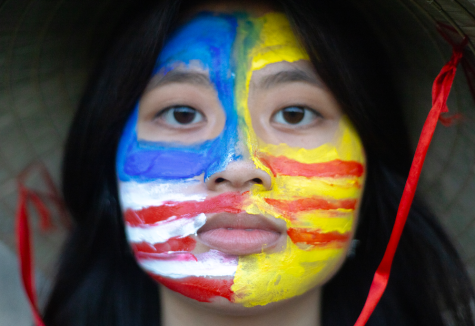
Like Reyes, Singh said he felt his identity was different from other students. He said that the lack of other Sikh kids to relate to in his early school days caused him to have to figure out many things on his own.
“I didn’t get many of the traditional American experiences,” Singh said. “I don’t think I relate to them at all.”
At the same time, Singh, like Pham, feels that being so far from his home country has caused him to feel disconnected from his own culture. However, Singh said he now actively participates in Bhangra, a form of traditional Punjabi folk dance, and also teaches it. He said being an instructor has helped him to connect further with his community.
“In some way or another, I’m also passing [Bhangra] down to the next generation and [I’m] upholding [my] own culture too,” Singh said.
Singh said that another way he connects with his heritage is through his religion. He said he often goes to the Gurudwra, the Sikh place of worship, and is looked up to there as well.
“It’s really rewarding. Like for one, everybody there knows who I am. It’s really fun to just see all your friends there,” Singh said.
Both Singh and Pham said they have faced other struggles growing up as children of immigrants in America. Pham said she feels a constant pressure to do well and succeed in life, both from herself and her parents.
“We just realize that [our parents] sacrifice a lot to come over here, and so you feel like it’s almost disingenuous if you don’t try to return that same sacrifice of just giving it your all to academics,” Pham said.
Singh said he also feels this burden when it comes to representing himself and creating his image.
“My parents always told me that I have six little cousins looking up to me. So if I don’t set the bar pretty high, then they’re going to become something that’s not socially acceptable in India,” Singh said.
Despite this, Pham said there are ways to alleviate the pressure.
“I think it’s important that all of our voices are heard. Reaching out and branching those connections can help kids who might feel left out because of their skin color,” Pham said.
Being a child of an immigrant can cause struggles as Reyes said, but she is also reminded of the things she is thankful for from her parents.
“I’m grateful for having a worldview,” Reyes said. “A lot of kids have never been confronted with anything they aren’t comfortable with. Growing up, I was very much aware of how lucky I am.”
First and second generation immigrant students often experience life through a different lens than those who have always lived in America, with families that also grew up in the United States. Through bonding with their peers and community, these students said they have been able to adjust to the pressures of adapting to American society.
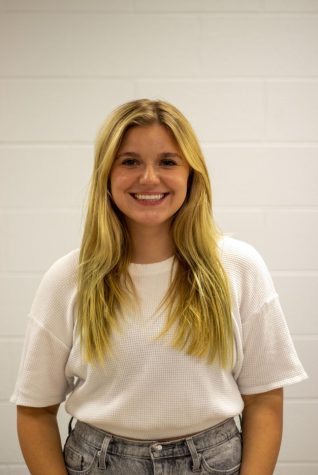
Ashley Adams is a senior and the Copy Editor for “The Express.” This is her second year on staff. Ashley is also a member of NHS, NEHS, NSHS, Kay Club, Student Government, Quill & Scroll and FCCLA. Outside of school, she enjoys spending time with her family and friends. This year she is looking forward to creating exciting stories with her fellow staff members for the BVNW student body to enjoy.

Jeny Jithesh is a senior and Online Editor of “The Express” and BVNWnews. This is her second year on staff as a writer. Outside of newspaper, Jeny is serving as the President of FBLA and KAY Club and participates in Student Government, NHS, NEHS, and Quill & Scroll. In her free time, Jeny loves going on walks with her parents, hanging out with friends, painting, and traveling. She is looking forward to contributing to BVNWNews as an editor and writer!
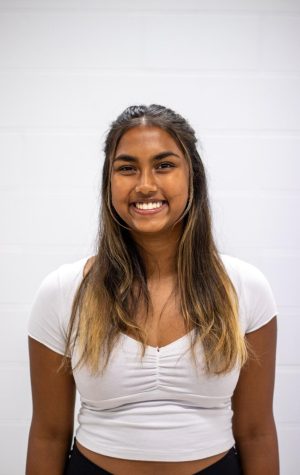
Arpa Das is a senior and a photographer for the Express. This is her first year on staff. Outside of newspaper she is part of the BVNW girls golf team, MUSE, NHS, KAY Club and is a board member of NAHS. Arpa also enjoys binging Netflix shows as well as going to the driving range and shopping with her friends. She’s excited for what her senior year will bring.


